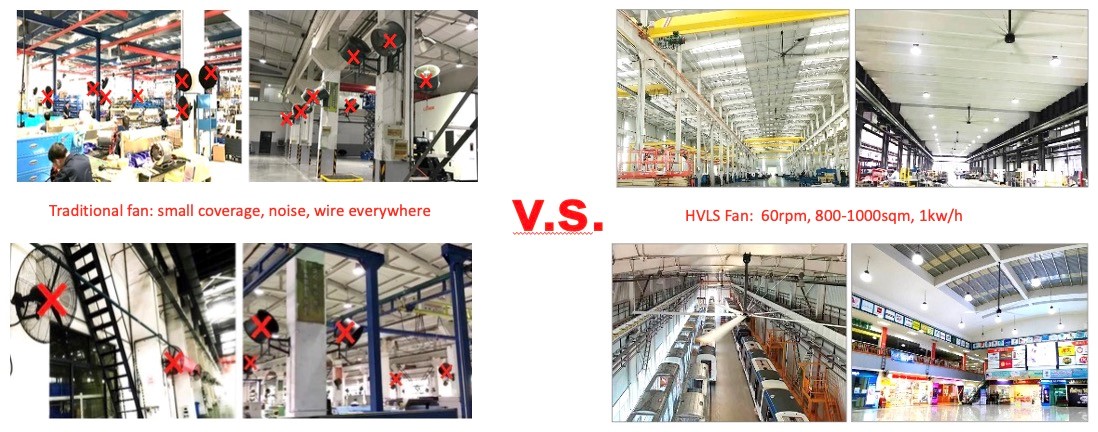When it comes to cooling down large spaces, two popular options often come to mind: ceiling fans and HVLS fans. While both serve the purpose of creating a comfortable environment, they differ in terms of functionality, design, and energy efficiency. In this blog post, we will explore the characteristics of ceiling fans and HVLS fans to help you make an informed decision for your specific needs.
Ceiling fans have long been a staple in residential settings, offering a cost-effective and energy-efficient solution for circulating air in smaller rooms. With their compact design, they are typically mounted directly to the ceiling and feature a set of rotating blades that create a steady airflow. Ceiling fans are known for their versatility, as they come in a wide range of sizes, styles, and customizable features.
In contrast, HVLS fans, short for high-volume, low-speed fans, are ideal for industrial and commercial spaces with high ceilings and expansive floor areas. These fans are known for their massive size and slow rotational speeds, which allow them to move a significant volume of air at low energy consumption. Designed specifically for large spaces, HVLS fans can greatly improve airflow, ventilation, and overall comfort in warehouses, factories, gymnasiums, and other similar environments.
When it comes to energy efficiency, HVLS fans take the lead. Due to their larger blade diameters and low rotational speeds, HVLS fans can effectively move a substantial amount of air with minimal power usage. They excel in minimizing energy costs, making them an eco-friendly choice for businesses striving to reduce their carbon footprint. Moreover, HVLS fans can also enhance temperature regulation, particularly in spaces with high ceilings where warm air tends to accumulate.
Ceiling fans, on the other hand, are more suitable for smaller spaces and are often appreciated for their cost-effectiveness. They typically consume less electricity compared to air conditioning systems, making them an attractive option for residential use. Furthermore, modern ceiling fans often come with features like adjustable speed settings, built-in lighting, and remote control operation, adding convenience and functionality to any room.
To determine which fan type is right for you, consider the size and purpose of the space you need to cool down. If you have a residential area or a small room in a commercial setting, a ceiling fan might be the perfect fit. They are relatively easy to install, budget-friendly, and come in various styles to match your décor.
However, if you have a large industrial or commercial space with high ceilings, an HVLS fan is the way to go. It provides effective air circulation, enhances ventilation, and ensures optimal comfort for employees or customers. Moreover, HVLS fans can be equipped with smart features, such as automated controls and energy-saving modes, to maximize efficiency and convenience.
Both ceiling fans and HVLS fan have their strengths and are designed for specific purposes. Choosing the right fan depends on the size of the space, energy efficiency requirements, and personal preferences. By understanding the differences between the two, you can make an informed decision that suits your cooling needs while considering the environmental and financial implications.
Post time: Nov-15-2023


